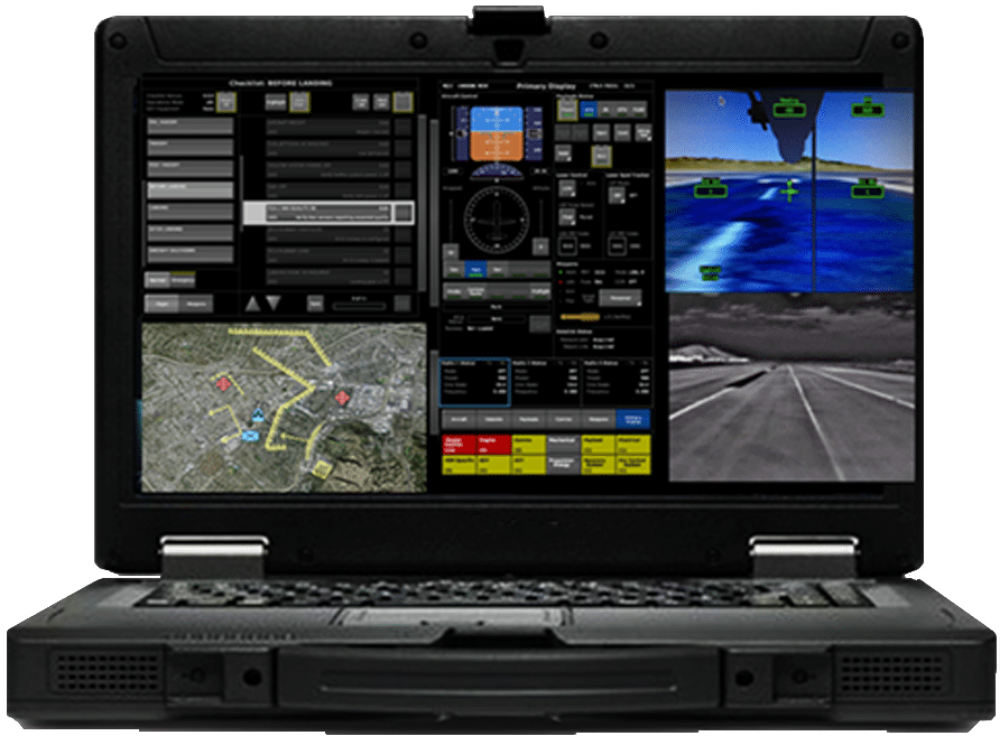wants it to be so easy to manage drones that, using the company’s Heresy multi-mission control (MMC) software, one operator can oversee a half-dozen large UAS, assigning tasks and monitoring statuses from a single laptop.
That’s the message Heresy Chief Engineer Chen Li stressed at the Association of the U.S. Army’s annual conference in Washington, D.C., where the company unveiled the new technology. The company wants to reduce the required manpower, training and footprint required to prepare an unmanned aircraft system for deployment.
“People would say reliable and capable, but the complaint we would get is it’s hard to use,” Li said. “So that was our focus.”
General Atomics Aeronautical Systems’ (GA-ASI) first priority was switching from hardware to software. Li said Heresy is platform-agnostic, able to run on any computer the customer wants to set it up on. The company also worked to automate as much as possible, so what used to be a mandatory two-person pre-flight checklist now requires only the operator. Heresy automatically completes what it can and prompts operator involvement only when and where necessary.
According to Li, the target for prepping a drone such as an MQ-9 or a Gray Eagle for launch is 15 minutes with the MMC’s assistance. Traditionally, it would take a team one to three hours. The primary time-saver is the automation of long checklists that operators previously needed to manually complete. Now, the system speeds through much of the process on its own. When human intervention is required, it provides an alert and automatically brings up the relevant screen.
The software, Li noted, is built to work with other companies’ aircraft as well, not exclusively GA-ASI drones. While it’s being tested primarily with MQ-9s and Gray Eagles in mind, as long as the UAS reports the proper messages as outlined by the U.S. Defense Department, it should be able to be integrated into Heresy. If something comes up during flight that requires extra attention, control of a drone can be re-assigned to a different controller in the network with a couple button-presses. Similarly, if one needs to land for refueling, it can be dropped out of the software or a new one added quickly.
GA-ASI brought in a third-party user-experience company by the name of Trideum to consult on design. Because one of the goals was to be as accessible as possible to today’s and tomorrow’s operators — especially in forces like the Army, which uses only enlisted operators rather than commissioned pilots — Li said they wanted to do “what would make sense to today’s users, not you as an engineer.”
The end result is that Heresy provides command-and-control capabilities from a screen that looks a lot like a map screen in a war video game and is compatible with an Xbox controller. Leveraging the spread of video games has also become a popular strategy in training, where more and more of the curriculum comprises simulations based on gaming technology. Drawing on that familiarity for inspiration allows operators of Heresy to hit the ground running and develop quick muscle memory; think learning new phrases instead of an entirely new language.
Because of the increased automation enabled by the connectivity on drones such as the Gray Eagle, the software allows one operator to control five or six UAS at once. The individual will look at a status screen watching the aircrafts’ symbols progress along their routes (Li compares this to watching cars drive along roads in the Uber app) and can use the device of choice to select different ones, add new commands, check statuses or reassign control to a different controller.
The system, meanwhile, will provide support to the controller so suggested patrol routes around a base, for example, don’t involve the drone crossing outside of the mission boundary or running into a mountain. If there is an emergency situation, the system will ping the operator with an alert, allowing that drone to be quickly selected, at which point a course of action will be suggested for approval.
The MMC software also integrates with third-party auto-routing services, so when an operator decides on a target location, an ideal path there can be suggested for approval, taking into account weather and terrain. Li also said GA-ASI is working to iterate on this concept — “Think Google Maps, where it suggests multiple different routes for you to choose from.” That requires an optimization algorithm that he said GA-ASI may come up with but might look externally, where another company is also close to what is needed.
General Atomics is looking at all of its existing customers as potential Heresy operators, Li said, which will complement and supplement its portfolio of unmanned aircraft. The company plans to demonstrate the software in flight tests using the MQ-9 at its flight test center in Grand Forks, North Dakota within the next six months.
Photo: General Atomics’ Heresy multi-mission control software running on a laptop. Image courtesy of GA-ASI
Source: Avionics International

